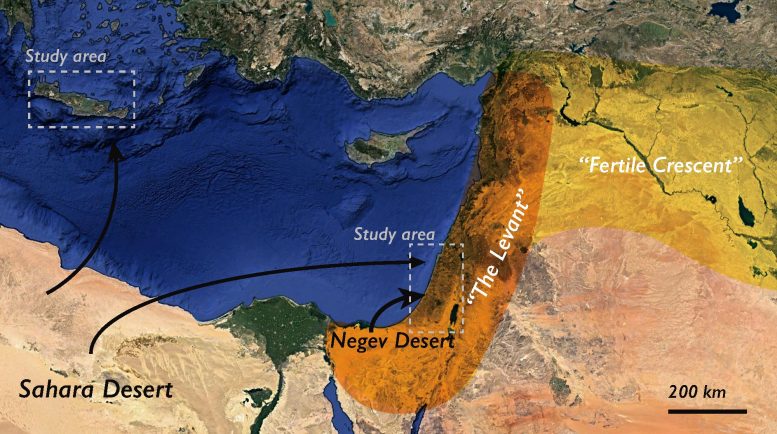
Map shows the Levant region (shaded in orange), which is the western part of the overall Fertile Crescent region (shaded in yellow); the study areas in Israel and Crete are in dashed gray boxes. Arrows from the Sahara and Negev Deserts show dust transport patterns, and their thicknesses indicate relative grain sizes being transported. Fine-grained dust is transported by wind from the Sahara to the Levant, and coarser dust (loess) is transported the shorter distance from the Negev Desert to the Galilean Mountains in Israel. Credit: Rivka Amit et al. and Geology
When early humans began to travel out of Africa and spread into Eurasia over a hundred thousand years ago, a fertile region around the eastern Mediterranean Sea called the Levant served as a critical gateway between northern Africa and Eurasia. A new study, published in Geology, shows that the existence of that oasis depended almost entirely on something we almost never think about: dust.
Dr. Rivka Amit, at the Geological Survey of Israel, and her team initially set out with a simple question: why are some soils around the Mediterranean thin and why are some thick? Their investigation led them to discover not only that dust deposition played a critical role in forming thick soils in the Levant, but also that had the source of dust not changed 200,000 years ago, early humans might have had a much tougher time leaving Africa, and parts of the Fertile Crescent wouldn’t have been so hospitable for civilization to take root.
Thick soils tend to form in areas with wet, humid climates, and thin soils form in arid environments with lower weathering rates. But in the Mediterranean, where much of the bedrock is dissolvable carbonate, the opposite is true: wetter northern regions have thin, unproductive soils, and more arid southeastern regions have thick, productive soils. Some scientists have attributed these patterns to differences in the rates of erosion, driven by human activity. But for Amit, who has been studying the area for years, a high erosion rate alone didn’t make sense. She challenged the existing hypotheses, reasoning that another factor—dust input—likely plays a critical role when weathering rates are too slow to form soils from bedrock.
To assess the influence of dust on Mediterranean soils, Amit and her team needed to trace the dust back to its original source. They collected dust samples from soils in the region, as well as nearby and far-flung dust sources, and compared the samples’ grain size distribution. The team identified a key difference between areas with thin and thick soils: thin soils comprised only the finest grain sizes sourced from distant deserts like the Sahara, whereas the thicker, more productive soils had coarser dust called loess, sourced from the nearby Negev desert and its massive dune fields. The thick soils in the eastern Mediterranean formed 200,000 years ago when glaciers covered large swaths of land, grinding up bedrock and creating an abundance of fine-grained sediments. “The whole planet was a lot dustier,” Amit said, which allowed extensive dune fields like those in the Negev to build up, creating new sources of dust and ultimately, thicker soils in places like the Levant.
Amit, then, had her answer: regions with thin soils simply hadn’t received enough loess to form thick, agriculturally productive soils, whereas the southeastern Mediterranean had. “Erosion here is less important,” she said. “What’s important is whether you get an influx of coarse [dust] fractions. [Without that], you get thin, unproductive soils.”
Amit didn’t stop there. She now knew that the thickest soils had received a large flux of coarse dust, leading to the area’s designation as the “land of milk and honey” for its agricultural productivity. Her next question was, had it always been like this?
She was surprised at what they found. Looking below the loess in the soil profile, they found a dearth of fine-grained sediments. “What was [deposited] before the loess were very thin soils,” she said. “It was a big surprise… The landscape was totally different, so I’m not sure that people would [have chosen] this area to live in because it was a harsh environment and [an] almost bare landscape, without much soil.” Without the changing winds and formation of the Negev dune field, then, the fertile area that served as a passage for early humans may have been too difficult to pass through and survive.
In the modern Mediterranean, the soils aren’t accumulating any more. “The dust source is cut off,” Amit explained, since the glaciers retreated in the Holocene, “now we’re only reworking the old loess.” Even if there were a dust source, it would take tens of thousands of years to rebuild a soil there. That leaves these mountainous soils in a fragile state, and people living there must balance conservation and agricultural use. Employing responsible agricultural practices in the region, as terracing has been used for thousands of years, is critical for soil preservation if agriculture is to continue.
Reference: “Quaternary influx of proximal coarse-grained dust altered circum-Mediterranean soil productivity and impacted early human culture” by Rivka Amit, Yehouda Enzel and Onn Crouvi, 11 September 2020, Geology.
DOI: 10.1130/G47708.1



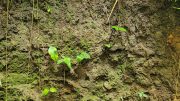
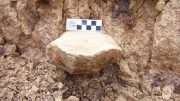
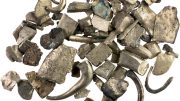
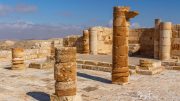


the whole out-of-africa movement of humans is truly fascinating – but why were the lighter skin toned people forced out by the darker toned clans?
As the climate changed in the Sahara region from wetter & fertile to desert, then there was massive dust available to get spread over other areas…so of course there would be a different soil pattern in those areas before the Sahara went dry. So you could also then see why there would have been a population in the Sahara fertile places, that then followed the rains & moved to better survival areas naturally. In other words soils & weather patterns changed, and people moved accordingly.
The spice, the spice Melange
Finish it. Dust and bugs, of all sizes.from insects such as locusts, to bacteria sized ones such as typhus & cholera, to viruses such as smallpox. Smallpox was the single greatest killer of humanity until eradicated. Oh, let’s not forget the fleas on rats, as they carry the plague. I was born in Arabia in 1956. I clearly remember the detestation, and our eradication of the diseases.
Finish it. Dust and bugs, of all sizes.from insects such as locusts, to bacteria sized ones such as typhus & cholera, to viruses such as smallpox.
Smallpox was the single greatest killer of humanity until eradicated. Oh, let’s not forget the fleas on rats, as they carry the plague.
I was born in Arabia in 1956. when Arabia was pretty much in the Bronze Age (iron was rare and of low quality).
I clearly remember the deaths of four out of five children before age five; they didn’t even formally name children until they survived smallpox. People were pockmarked, almost every person alive. That’s why heavy makeup powder was used. It was extremely rare to have a clear face. I suspect Helen of Troy was one.
It was a 35 year battle to eradicate smallpox and polio (we did polio because President Roosevelt was a victim, and he led the fight by and funding of WHO and UNICEF. I was used to show bédouins that shots were not fatal, beginning at age four, so I remember it vividly.
We were determined not to repeat the deaths of 95 out of 100 million people on the Americas between 1492 and 1512, from Influenza, the Common Cold, etc. transmitted by the Spanish explorers and their pigs. I believe the Jesuits were aware of the problem, by the way. They had experienced it, with the Portuguese circumnavigating Africa.
I have added several unsubstantiated assertions here, but I could back them up if needed. I suggest some grad students check them out.
Thanks, I had not thought but the possibility HELEN OF TROY was a rarity with unscarred skin is a new direction. Always the tiniest bit of truth in every myth and legend.
The evolution revolution of science.spitituality .civilization.male.female
Was the collusion.eg that which happening .was happening.from the magna magnetic dust particles of attract.repel.formless.form.habiitat species Environ.
The Cosmo planetarian genetics of thermal release.
Our planet earth is the CATALYST for us SPECIES humanity to harmony all creations.
This is a new cleansing awakening.
The EVOLUTION BEGINNING FROM WRITTEN ALLNESS TO NOW .Now to unknown to be KNOWN.
The ONENESS of and in the Magna dust particle in every allness.
Everything nothing emptiness matter mass energy has the Magna dust particle.
EG every being has the cocoons of all Ness.
The principle EG is the movie the fly.
We humans are so gifted .so blessed.
Let us be in HARMONY.
Let us unite the Dust of the UNKNOWN to the known Evolution of our being of the diverge and converge energy
EG toes.fingers
The sound of awakening dust particles in every creation
GOD THE OMNI BLESS COURAGE US ALL.
Scientists are the fakiest news driven by wanting to make history and no facts just gather evidence to create a delusion. First humans weren’t black but every color was first. Also there’s no life outside of earth. Nothing can live anywhere else. You need the basic elements of life so if you don’t have that in any planet or place then no life.These rookie scientists don’t even have grey hairs, I don’t trust a mechanic or doctor who doesn’t have grey hairs period.
Raitonnon sounds like Qanon mom. If you think science is unsubstantiated and stupid, then please don’t visit their communities just to insult the same scientists that made your quality of life what it is 🙂.
Well considering the out of africa myth has been debunked this creative narrative falls short. Also, this site is called scitechdaily and the writing starts with might/may have/maybe!!!! This is merely a creative writing site devoid of what we already know to be false.
The potential reality of the catastrophic event that destroyed Atlantis, as per Plato, has to be considered in any dust analysis. If a reality, expect the dust to be gradated with larger particles falling first, and the finer dust settling later (after weeks, months, years) in cumulative fallout layers. The settling dust pattern of the WTC collapses may shed some light.
This article appeared on my google news feed. thanks to whoever put it there. The article is a tiny summary of what Dr. Rivka Amit and her team discovered. It made me want to read their entire paper. Congratulations to Dr. Amit and her team. Excellent science, cogent analysis, well written, interesting to non-scientists, superb subject matter for elementary and high school research and science projects as well for the more aspiring college, grad and post-grad types. Thank you for your work.
Because,Stephen Shaffer, Black Lives Matter. Maybe it was ancient racism? Conflict and competition has been part of human existence since man began to walk upright.
Sorry, Stephen Schaffer, I misspelled your name.
… There have been many stuff influencing “Human Civilization”, we might just find some faded glimpses to guess, …
I bet the climate has influenced the ancient civilizations, way more than we could even guess.
and yes, those formulas for physics will never get into your hands…
First, the ‘out of Africa theory’ is based on scant evidence, a few bones we ‘think’ may be hominid. That Israel funds these expeditions in its own territory is fraught with conflicts of interest. Of course Israel seeks to lay down a Semetic claim to the origins of civilization. Other evidence suggests civilization likely started in the hub of Central Asia where it diffused like spokes to the east (Yellow River Civilization), South (Indus civilization) West (Sumerian civilization), and later even more West (Egyptian civilization). Central Asia is ideally situated, with good climate water sources, and plentiful steppe grazers (equine, bovine) capable of supporting advent of civilization. It seems Semetic claim must compete with Indo-Europeans, likely originators of civilization. Many esteemed anthropologists, including Childe, Dupree, feel is the more likely cradle of civilization is Central Asia. Possibility for domestication of animals, farming, and urbanization is likely greater there than an unforgiving salt plains with uneven soil and salty marshes with restricted access to fresh water. So, the crux of the matter is who established civilization, the Semites or Indo-Europeans? That’s what’s going on if you haven’t figured it out. Evidence favors an Indo-European origins to civilization.
Find it interesting since when we cruised from the Dubai to the Med via the Suez Canal we were coated with a fine dust all the way. The captain of the ship even made the comment that dust was the reason it was called the Red Sea.
People get lighter skin the further you get from the equator the sun is less intence so you don’t need the darker skin for protection.
Do you ever heard about Vinca, Lepenski Vir? Read about that. Vinca is older than Sumerian culture. 3000 years older. Maybe even the oldest civilization.
To Stephen: Skin color is adaptive, regulated by intensity of ultraviolet light, so people leaving Africa self-selected for lighter skin as they moved away from the equator. Melanin influences vitamin D production. So lighter skin color emerged as an adaption to sun-starved locales. It wasn’t a pretext for leaving Africa. Whatever your color is, keep your vitamin D levels high to avoid some of the worst symptoms of Covid-19.
Stephen, not sure if that was a serious question, but I’ll assume it was. Light skin tones are an adaptation that evolved after humans migrated out of Africa. Humans produce our own vitamin D in our skin when sunlight interacts with cholesterol. Darker skin is an adaptation that protects against more intense sun exposure near the equator, but in higher latitudes, where winter is longer and darker, it makes it harder to produce enough vitamin D. Lighter skin allows more light to react with cholesterol, ensuring that more vitamin D is produced. Dark skin is the original human standard, and light skin is a more recent adaptation. There weren’t white people in eastern Africa 250,000 years ago who got forced to migrate to Europe.
It is always fascinating to see how for some people, their entire existence and pride lies on being white, a phenotypic characteristic inherited by chance. Much of the world, the phones we use, the computer,medicine, etc are examples to shut up skeptics of the power of science. And why would your acceptance of science only be when it suits your need for prejudice and discrimination ? Skin colour had nothing to do with people moving out of Africa as the melanin content of the skin is an adaptive trait The further people moved away from the equator the less melanin they needed to protect them from the dreadful cancer-causing UV light.
Idk why people are concerned even with this new virus it seems as i look at historical plague out breaksit seems to happen evry 30 to 500 years and seems to last almost 100 yrs corona seems to cause breathing problems and caughing while all these previous outbreaks make corona look like childsplay or swith syptoms of lesions all kinds of sores caughing up blood and extreme fevers and so on i see someone caughing no big deal smokers caugh all the time i see blood coming from eyes nose moth. Mouth id be like holy cow thats bad i mean ythey usually disapear for a long while after they do damage or completely so whats up with that anyways society florishes and bam population control from plagues disease and enviroment somehow we manage to beat that create anti viruses go figure
Oh, that’s when it all started.